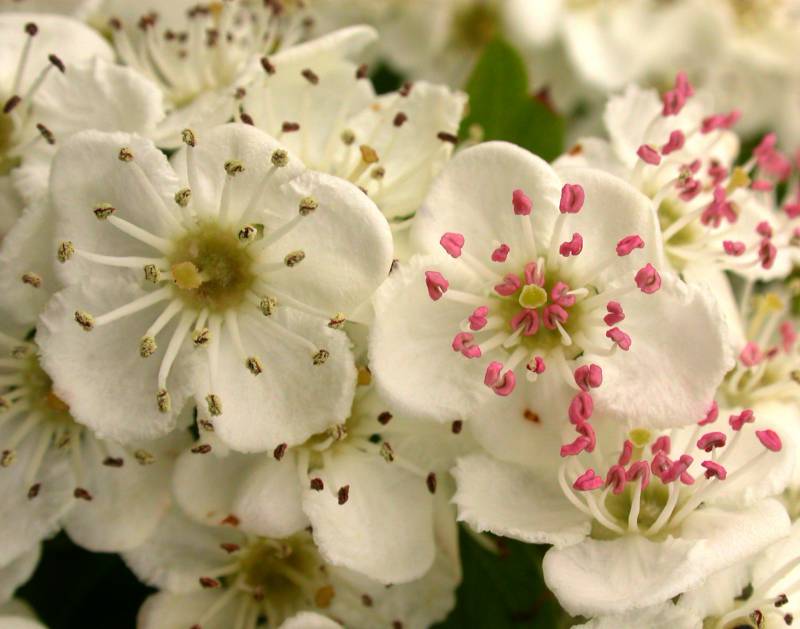Crataegus monogyna
Crataegus douglasii
English hawthorn, one-seed hawthorn
black hawthorn, Douglas's hawthorn
Leaf blades obovate, tapered to the petiole, 3-6 cm. long and nearly as broad, weakly lobed, pubescent to glabrous on both surfaces.
Flowers few in the leaf axils or terminal;
calyx bell-shaped, the 5 lobes triangular, entire, reflexed, 1.5-2.5 mm. long;
petals 5, white, orbicular, 5-7 mm. long;
stamens 10, styles 5.
Berry blackish, glabrous, about 1 cm. long.
Crataegus monogyna
Crataegus douglasii
Occurring chiefly west of the Cascades crest in Washington; southern British Columbia to California, east to Montana, also in the Great Lakes region and eastern North America.
Occurring on both sides of the Cascades crest in Washington; Alaska to California, east to Saskatchewan, Idaho and Montana, also in the Great Lakes region.
- Local floras:
BC,
CA,
OR,
WA
- Local Web sites:
CalFlora,
CalPhotos,
Flora NW,
PNW Herbaria
WildflowerSearch
iNaturalist (observations)
USDA Plants Database
- LBJ Wildflower Center
- SEINet
- Plants of the World Online
- Encyclopedia of Life
- Wikipedia
- Google Image Search
- Local floras:
BC,
CA,
OR,
WA
- Local Web sites:
CalFlora,
CalPhotos,
Flora NW,
PNW Herbaria,
Turner Photog.
WildflowerSearch
iNaturalist (observations)
USDA Plants Database
- LBJ Wildflower Center
- SEINet
- Plants of the World Online
- Encyclopedia of Life
- Wikipedia
- Google Image Search



